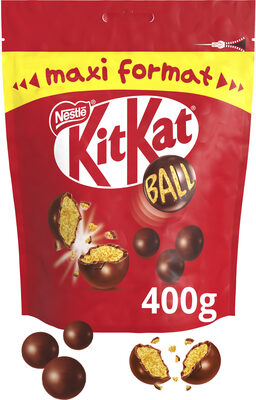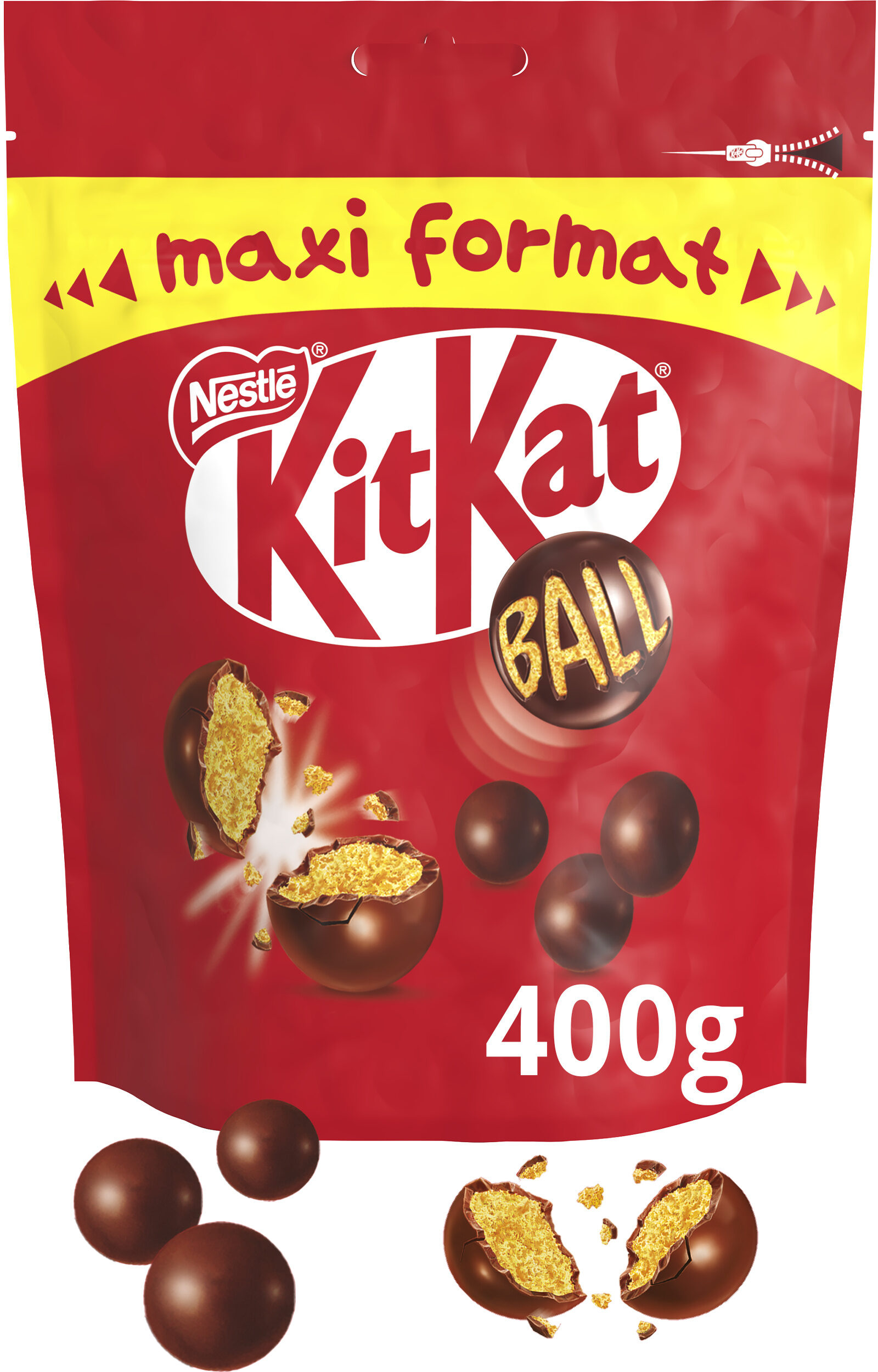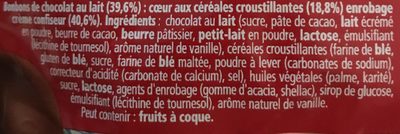KITKAT Ball, Billes au chocolat au Lait, 400g - 400 g
This product page is not complete. You can help to complete it by editing it and adding more data from the photos we have, or by taking more photos using the app for Android or iPhone/iPad. Thank you!
×
Some of the data for this product has been provided directly by the manufacturer NESTLE FRANCE. - Customer service: Contact form 0 809 400 412 (service gratuit + prix de l'appel)
Barra-kodea: 8000300280951 (EAN / EAN-13)
Izen arrunta: Bonbons de chocolat au lait (39,7%) : cœur aux céréales croustillantes (18,8%) enrobage crème confiseur (40,7%)
Kopurua: 400 g
Ontziratzea: en:Bag, en:pack, fr:Sachet en plastique
Kategoriak: en:Snacks, en:Sweet snacks, en:Cocoa and its products, en:Confectioneries, en:Bars, en:Chocolate candies, en:Bonbons, en:bars-covered-with-chocolate
Etiketak, ziurtagiriak, sariak:
en:Green Dot, en:Nestlé Cocoa Plan, Nutriscore, Nutriscore E, en:Pure cocoa butter, en:Rainforest Alliance, Triman


Dendak: Carrefour, carrefour.fr
Matching with your preferences
Ingurumena
Ontziratzea
Transportation
Threatened species
Etiketak
Other information
Preparation: Produit prêt à consommer
Conservation conditions: A conserver au frais et au sec.
Customer service: Nestlé France, 34-40 rue Guynemer 92130 Issy-les-Moulineaux
Report a problem
Datuen iturria
The manufacturer NESTLE FRANCE uses Equadis to automatically transmit data and photos for its products.
Product added on by kiliweb
Last edit of product page on by telperion87.
Produktuaren orria -gatik editatua acuario, driveoff, ecoscore-impact-estimator, margot-luis, mylabelcontributors, openfoodfacts-contributors, org-app-elcoco, org-nestle-france, packbot, roboto-app, teolemon, thaialagata, yuka.U3FjYktQMHZqS2NsdnNZZy9DM3I1L2xyL2FlN2RuK0dNOEVRSVE9PQ, yuka.WDZrYUF2a0hucVl4dmZjbHhSendvSXBKK0lHcldGS1JBTWNNSVE9PQ, yuka.ZjV0Zk9va0xscWNZbWZjbndFM0grZTVSbUxLa1l6cU5Edm9BSVE9PQ, yuka.sY2b0xO6T85zoF3NwEKvlktWecP9hRvcLDnTtm6q_cuELI3BaIFw7Jrqa6s.









